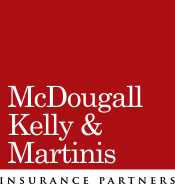
It’s understandable to assume that all restrictions/limitations to your policy coverage are outlined and defined by the policy exclusions. However this is not the case. In fact, many restrictions to your policy coverage are contained in policy definitions (i.e. where key words are defined) and in general conditions (clauses that define items that you and the Insurer need to abide by).
Here are some common examples taken from leading policy coverage’s:
1. Your policy covers professional services in relation to Funds. However, if you look at the definition of Fund, it may well say something like this:
Fund means each managed investment scheme, unit trust, partnership or investment company anywhere in the world managed, operated or administered by an Organisation but does not include a Hedge Fund, Mortgage Fund or Property Construction Fund unless such fund is specified in a scheduled endorsement to this Coverage Section.
2. Your policy covers Loss. The definition of Loss is often long and comprehensive, but almost all definitions then say “Loss does not include…” and then outline an equally long list of items not covered.
3. Tucked away under ‘General Conditions’ you may find very specific restrictions in relation to ‘Changes in Risk; Other Insurance; Valuation of Losses’. All these items are relatively standard, but each in their own way imposes a restriction on the cover that you have purchased.
Key message: if you take the time to read your policy exclusions to see what you are not covered for, you may as well continue through the rest of the document. If this doesn’t appeal to you (and we don’t blame you!) then ask your Broker to help you.
